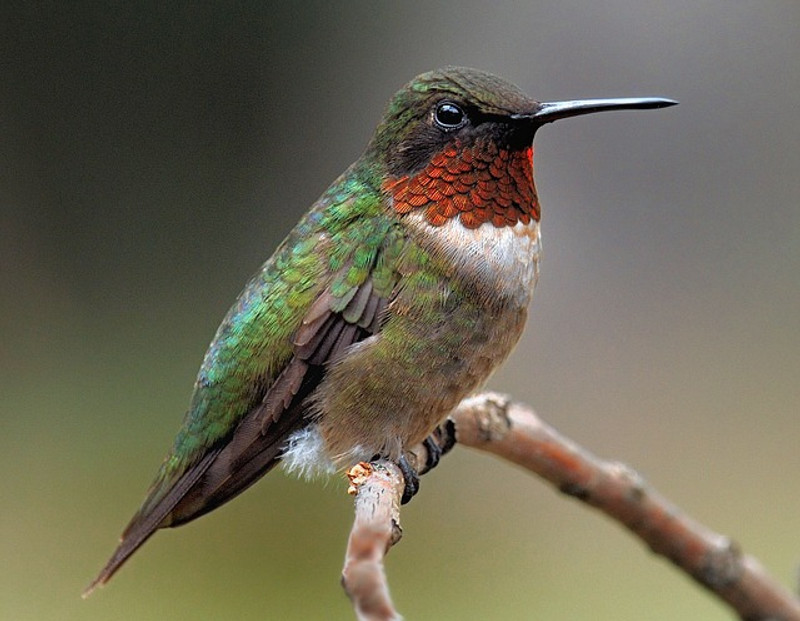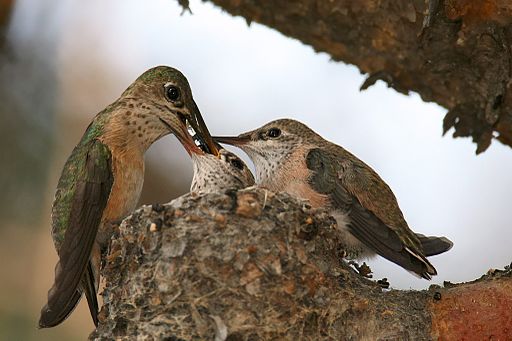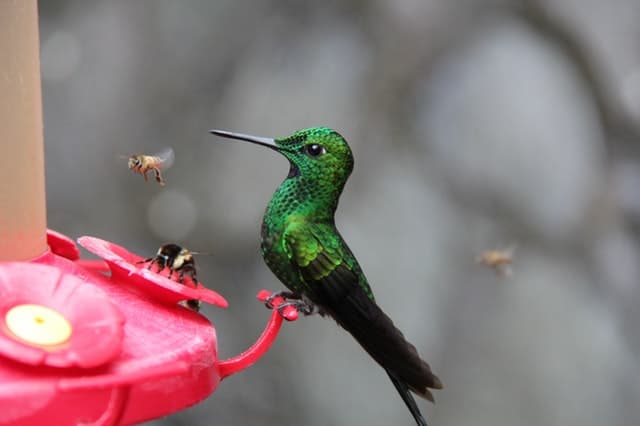
How to Feed Hummingbirds!
Published by Anne Altor on Jul 19th 2018
How to Feed Hummingbirds
Tiny, brilliant and brave, these fiesty little creatures are easy to love. There are some important things to know about how to feed hummingbirds, to avoid loving them to death. But first, here are some interesting facts about hummingbirds:
They have the fastest metabolism of any animal on the planet, and they eat up to 3 times their body weight in insects and nectar every day!
Their hearts beat about 500 times per minute, but when they're in torpor, which occurs if it gets too cold for them to fly and find food, their heart rate drops to about 50 beats per minute.
Their wings beat 720 to 5400 times per minute when hovering.
They migrate alone rather than in flocks, and when migrating to the U.S. in spring, they fly nonstop for 500 miles across the Gulf of Mexico, about a 20-hour flight!
Many species of hummingbirds use spider silk and lichen in their nest construction. This enables the nest to expand as the babies grow.
In matters of life and death, the most humingbird deaths occur in the first year of life. For those that survive, the average life span is estimated at between 3 and 5 years.
Threats to hummingbirds include cats and other predators, collisions with windows and buildings, habitat loss, pesticides and herbicides, and bad weather.

Caliope Hummingbird momma feeding two chicks. Wolfgang Wander, Wikimedia Commons.
How can you help these little gems?
Feed them, and provide great habitat! Here are some best practices for how to feed hummingbirds:
Plant native plants that will attract the spiders and other insects hummingbirds need. Here's a list of great plants for Ruby Throated Hummingbirds, the species found in the eastern United States. Don't spray the plants with herbicides or insecticides.
Feed them sugar water! Here's how:You need 4 parts water to one part white sugar. The sugar can be organic and unrefined, but don't use honey, molasses or other syrups, because they may contain pathogens and have iron levels that can be harmful to hummingbirds. Food coloring is NOT needed and may be toxic to these little creatures. They'll see the feeder just fine without chemical dyes in their food!
1. Boil the water, and add the sugar and let it dissolve.
2. After the sugar water cools, put a small amount in the feeder, hang the feeder out and enjoy watching hummers!
3. Store extra sugar water in the fridge.
Tips for feeding hummingbirds:

Photo by Dick Scholten. Use feeders that have small ports located above the nectar level to reduce contamination by insects.
Choose a feeder that has a mechanism for keeping ants and larger insects out. Insects spoil the nectar. Of all the feeders we've tried, the HummZinger has worked best for keeping insects out. You can also modify existing feeders by adding a moat to the top, using a deep lid such as from a kombucha bottle.
Use a small amount of nectar at a time to minimize waste.
Clean the feeder out every 2 to 3 days with soap and water or vinegar. This is absolutely critical during hot weather, as heat causes the nectar to spoil and spoiled nectar is toxic to the birds. It might be necessary to clean and refresh the feeder daily during extra hot weather. Keep an eye out for cloudy spots, insects and black spots in the water and on the inside of the feeder. If possible, place the feeder in the shade to preserve nectar and provide perches for hummies.
Place feeders at least 4 feet above the ground to help keep the birds safe from predators.
Put feeders up in early spring, and leave them up three weeks after you see the last hummingbird in the fall. Migrating hummingbirds will stop at the feeder for fuel on their journey. Of course, if you live in an area that has hummingbirds all year, you can keep feeders out year round.
Sugar water is a supplement, not a substitute. The most important food for hummingbirds is insects and nectar from flowering plants. See the plant list mentioned above as well as these tips from Audubon on how to create a complete habitat that provides food, shelter and nesting material!
While you're at it, make sure your windows are bird proof! Keep hummingbirds from fatal collisions with your windows using the techniques described in this post.
Enjoy feeding hummingbirds, and take heart in helping provide habitat for these amazing creatures!
If you enjoyed this post, here are some more you might be interested in:
How to Mow Better For Habitat!
How to Protect Birds from Window Collisions
How to Stop Your Cat from Killing Birds
How Dead Plants Provide Life for Birds, Pollinators and People!
Why Birds Need Fresh Water in Winter
How Leaves Help Your Yard and Wildlife!
Milkweed Species For Your Garden!
